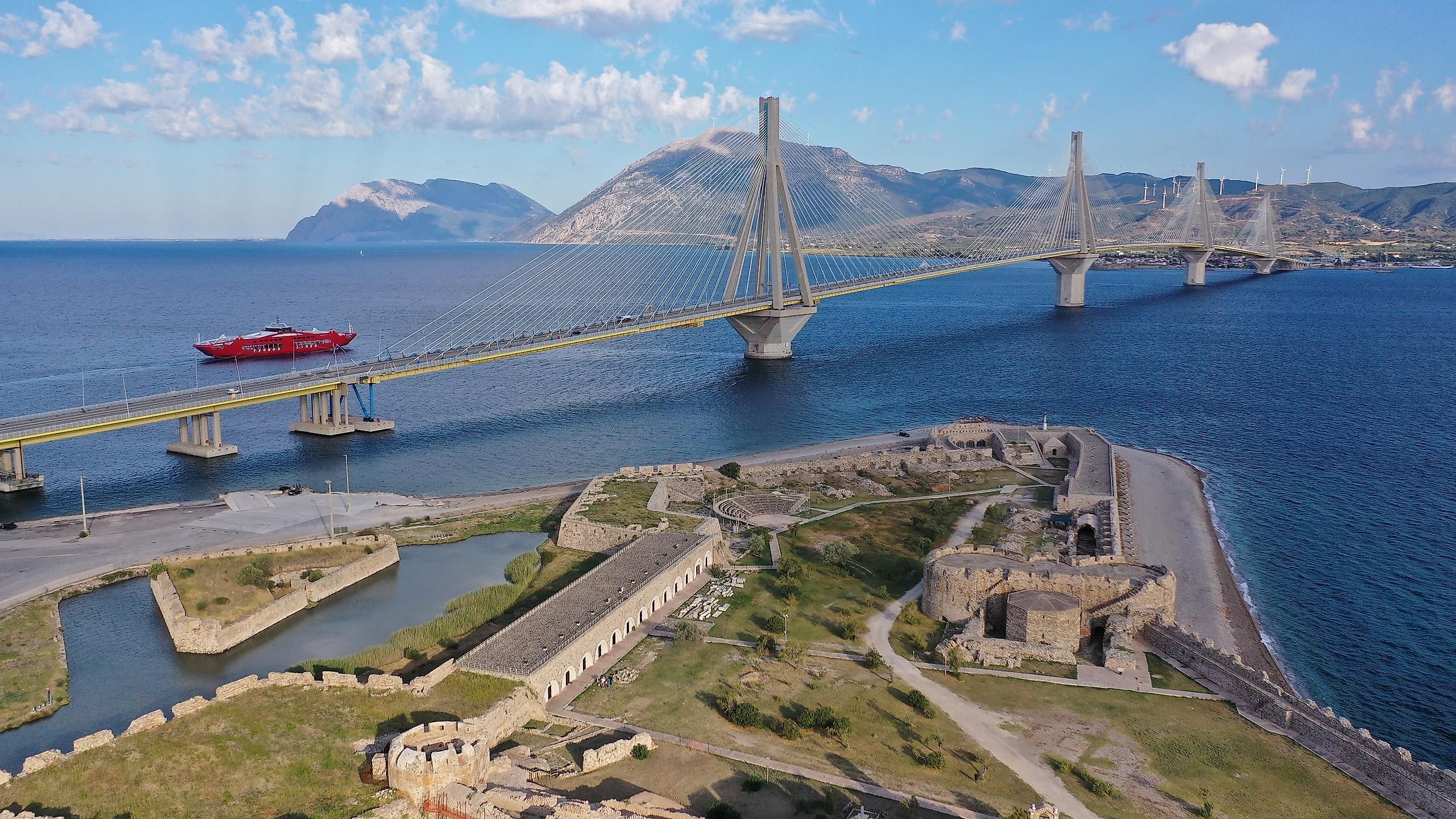
Corinthian Gulf
Located in the south of Greece, the Corinthian Gulf penetrates deep into the Greek mainland. Almost cutting the nation in half, the Peloponnese peninsula barely clings on to Greece proper with the help of the Isthmus of Corinth. Due to its central location, the Gulf of Corinth has served the people of Greece as a hub of both trade and travel since time immemorial. The impact this body of water has had on Greece over the centuries has been vast and invaluable.
Geological Features
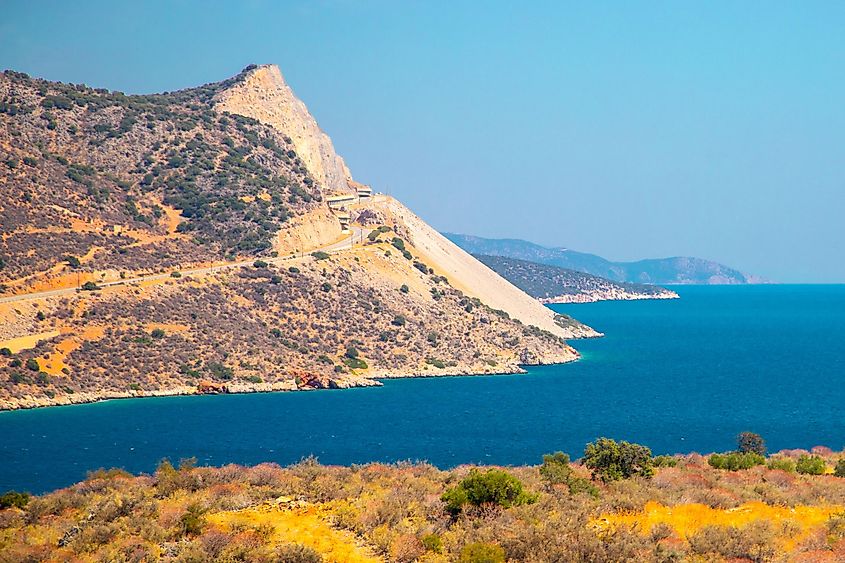
Scientists believe that the Gulf was formed by tectonic movements involving the Anatolian Plate. Located adjacent to a fault line, the Gulf experiences earthquakes a few times yearly, but they tend to be mild and unimpactful. The most notable earthquake to take place here in recent memory was in 1995 near the city of Aigion. A 6.5 quake struck and considerably damaged the nearby areas and infrastructure. However, since then, there has thankfully been nothing too serious.
This seismic activity has done some good, though. After millions of years of plate movement, the shoreline of the Corinthian Gulf is some of the most stunning in the world. Much of the Gulf is surrounded by steep cliffs and jagged rock faces. This fact is no more self-evident than around the Corinth Canal. While it might not be obvious looking at a map, the Isthmus of Corinth is separated by a small artificial canal that runs into the Aegean Sea. The canal is not very large, and at its narrowest, it is only 81 ft wide.
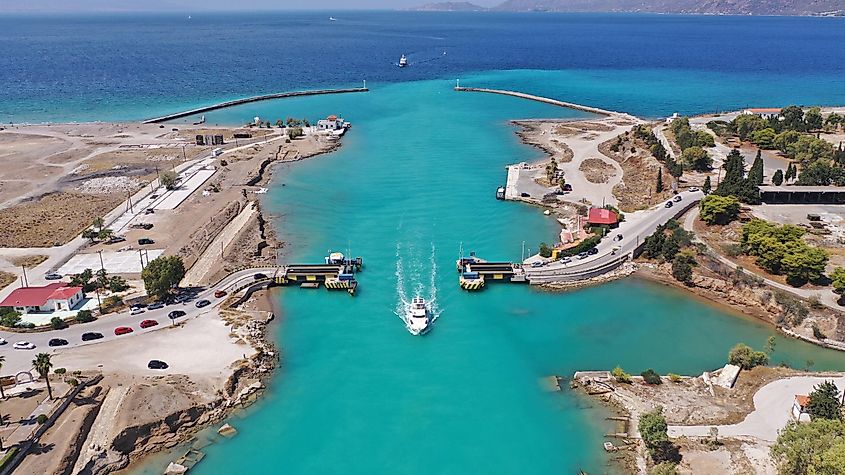
The canal was constructed in the late 19th century and was not built with modern cargo ships in mind. The largest kind of boat that can pass through a small side cruise ship or ferry. Regardless of its size, it is still a very important waterway for the Greek nation. The tributary rivers that flow in and out of the Gulf are largely situated in the south along the coast of the Peloponnese, with the two northern rivers, the Mornos and Pleistos being the exceptions.
Marine Life In The Corinthian Gulf
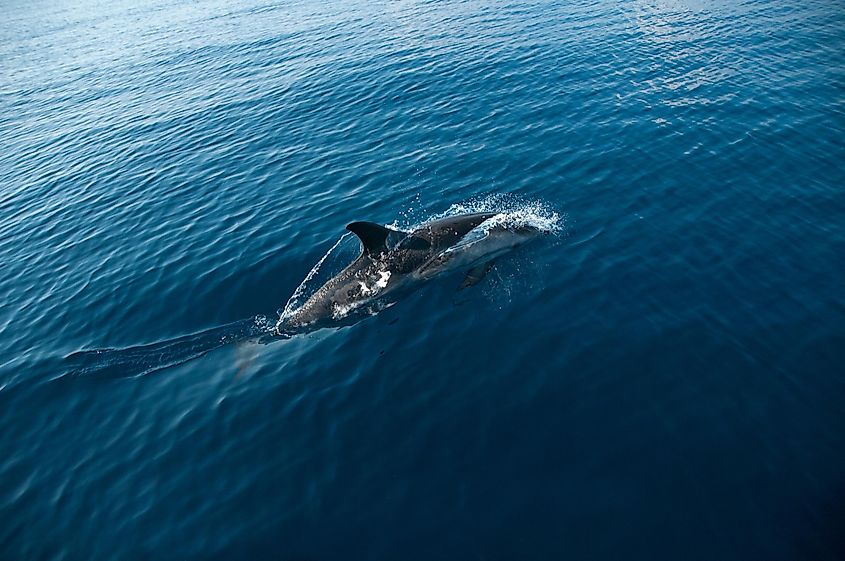
The Corinthian Gulf is rich with an endless amount of marine life. From otters to hawks, the biodiversity in this region is hard to match. Mediterranean Monk Seals, Sperm Whales, Striped Dolphins, Loggerhead Turtles, and Basking Sharks are some of the iconic species on display.
Aside from these standouts, thousands of different kinds of fish and invertebrates live in the waters around Greece and the Gulf of Corinth. Many seabirds and birds of prey are present too. Hawks, eagles, and falcons can all be seen circling high above in search of their next meal. With plenty of fishermen out on the water, there is a good chance that these birds are also looking to pick up some of the catch.
Major Cities And Towns
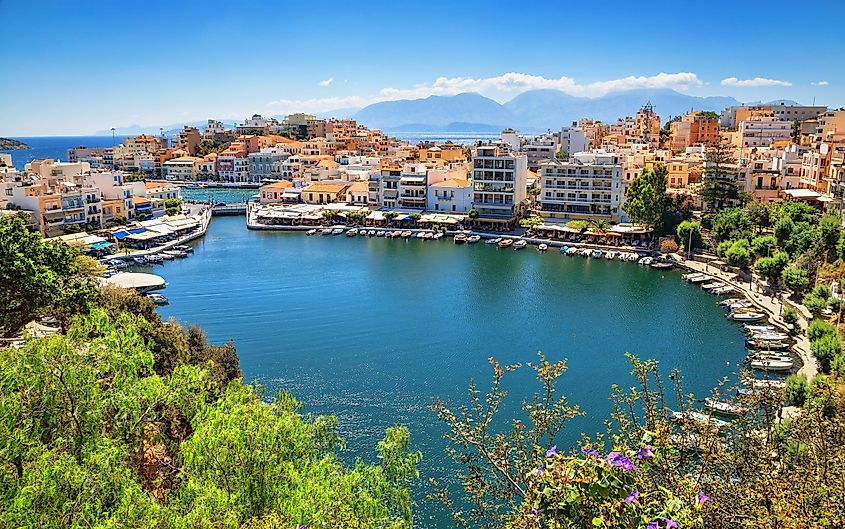
Of the dozens of cities and towns that dot the shoreline of the Gulf, the most notable cities are Corinth, Agios Vasileios, and Galaxidi. Each of these cities is important to the ecosystems and economies of the Gulf of Corinth.
Fishing, trade, and tourism are what largely fuel the local economy. Not the mention the large agricultural industries that exist in the interiors. These are mostly irrigated and keep running thanks to the nearby tributary rivers.
Travel across the Gulf from city to city is relatively easy as well. There is an abundance of both public and private ferries that move thousands of people across each day. The warm and calm water makes for a smooth and relaxing trip.
History Of The Corinthian Gulf
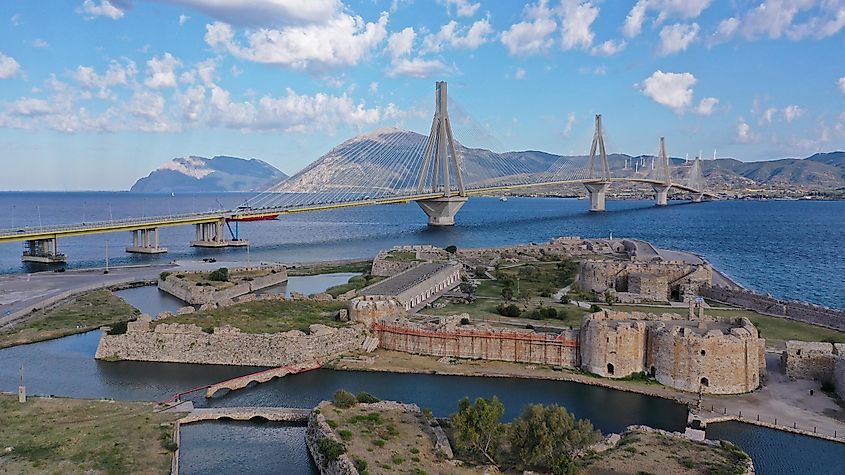
Due to the sheer age of Greece, the Corinthian Gulf has been the site of many momentous moments in history. The nearby landscape is awash with ancient ruins from the classical Greeks, the Romans, the Byzantines, and the Ottomans.
Most famously, the Corinthian Gulf was home to one of history's largest and most pivotal naval battles. In 1571, the forces of the Ottoman Empire and the Holy League clashed their immense navies against one another to determine who would hold sway over the Medditerrain Sea. Hundred of ships from both sides took part in the battle, resulting in a costly yet clear victory for the Christian powers of Europe.
The Corinthian Gulf is both a stunning and integral part of Greek life. For each stunning landmark or picturesque town on its shores, there are a dozen more practical and economic functions that this body of water carries out. Greece is home to some of the world's most unusual and unique geographies, and the Corinthian Gulf is just another example of that.











